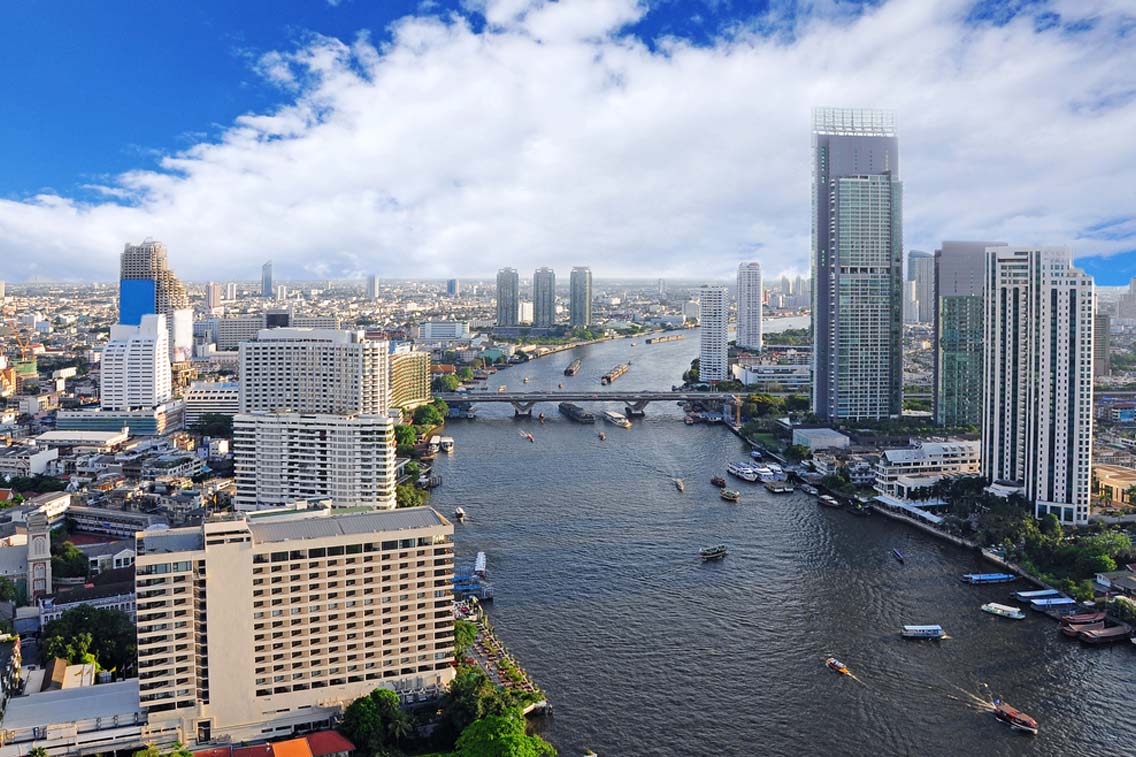In contemporary times the river is a hive of activity, and millions of people earn a living from abundant activities, afloat, on the riverside, and in the greater watershed area.
The Chao Phraya today functions as an important transport network; a life source for farming activities; a provider of employment; a symbol of the country’s unity in the guise of different riverside religious monuments; and a major tourism draw.
About 20 million people – one in three of the population – live within the river’s water basin, most of which is agricultural land with rice the leading crop produced in farming communities.
The river has also been a valuable waterway for the transportation of the country’s traditional export of teak from the northern highlands to Bangkok and beyond. In an era of airfreight, cargo ships and advanced road networks, it still has an important role as a transport hub for the multi-hull barges that carry huge loads down this waterway and on to the docks.
It is also an important people carrier: a vast network of riverboats, cross-river ferries and water taxis ensure city commuters and tourists can travel its length and breadth to meet work commitments, or access the tourism attractions.
The River of Kings is well and truly alive from early morning when the riverside markets start trading, until late at night when the last dinner-cruise boats moor to allow their guests home.
No other district of Bangkok can provide such a definitive insight into the social, economic and cultural fabric of Thai society. Visitors will take home more than just snapshots – a trip down the Chao Phraya gives a multi-sensory taste of the capital city and the people that call it home.


